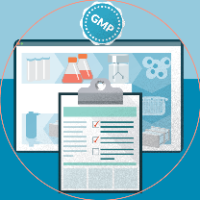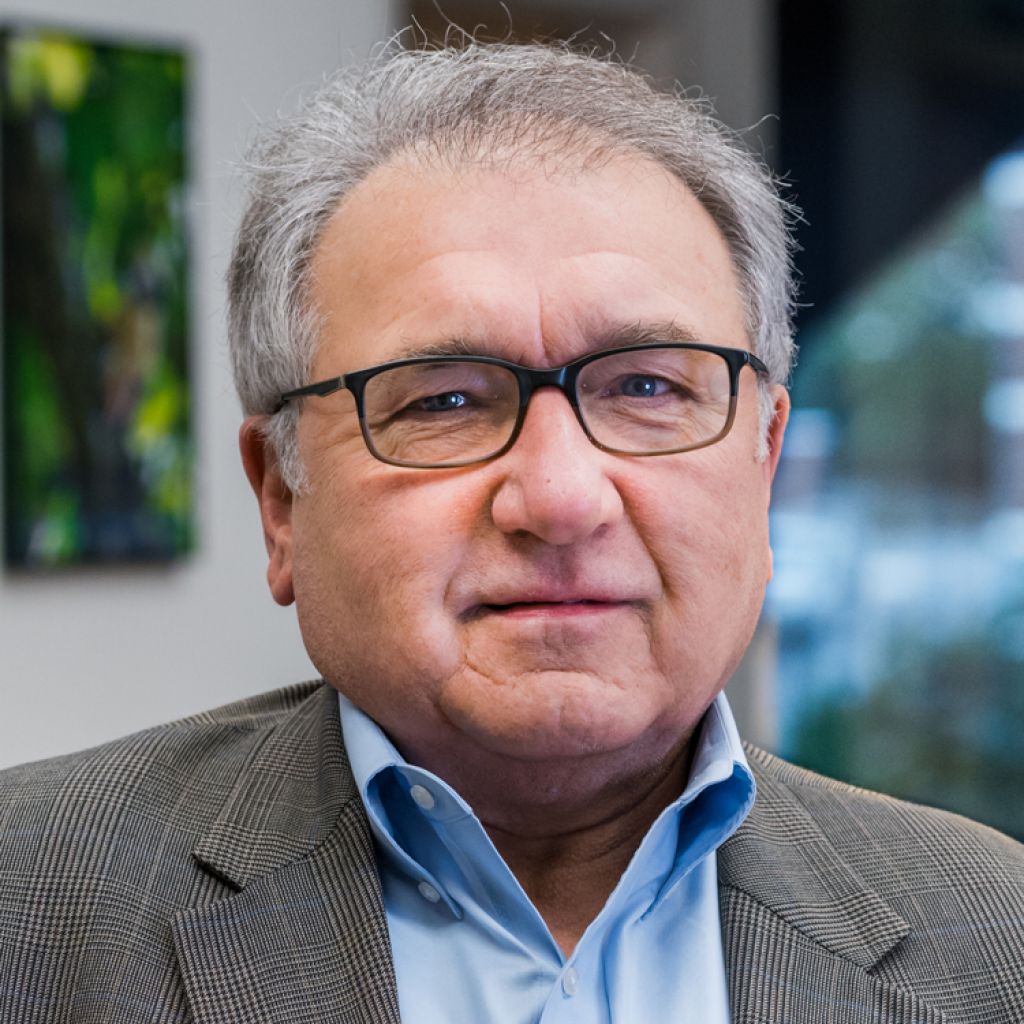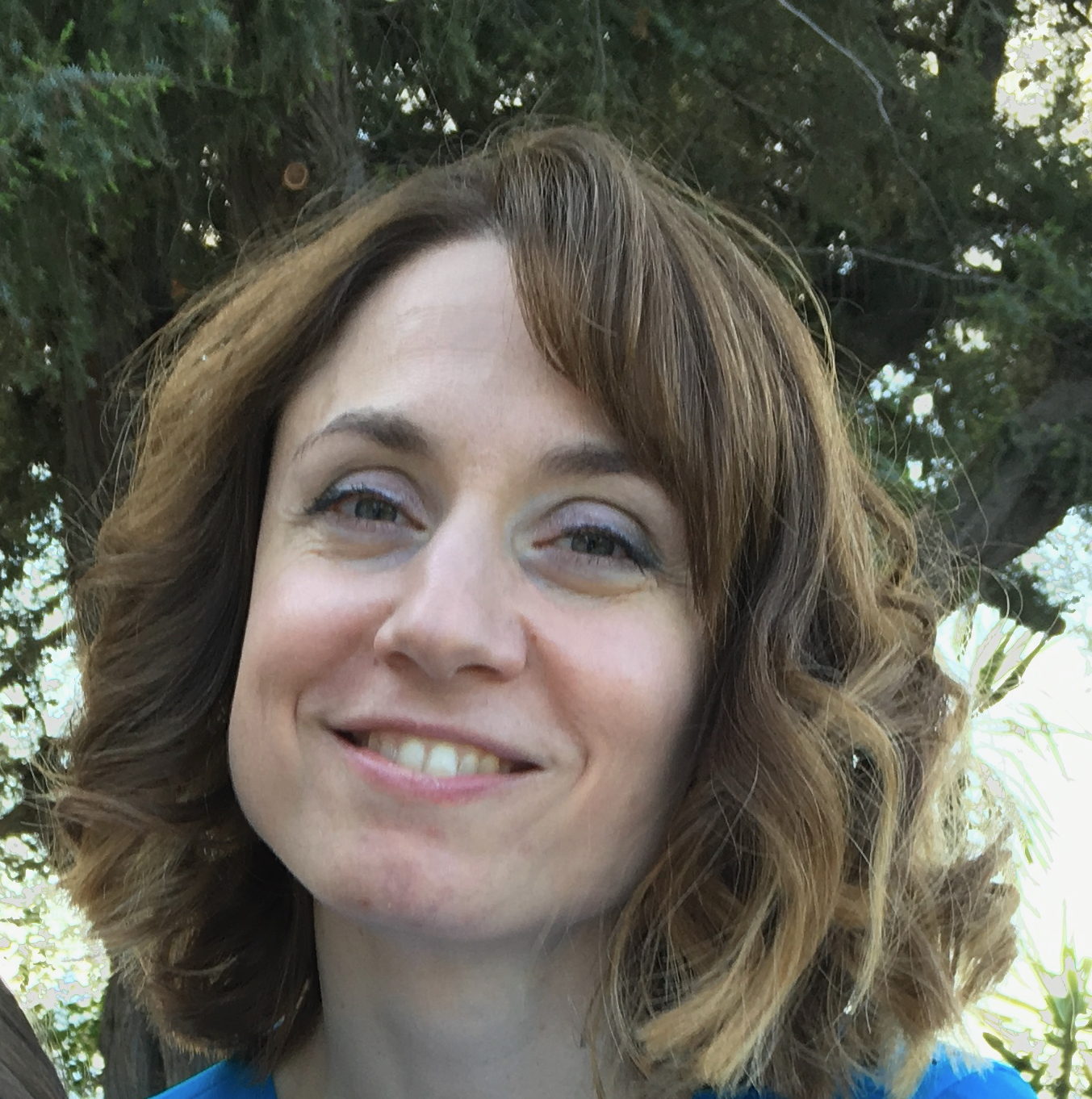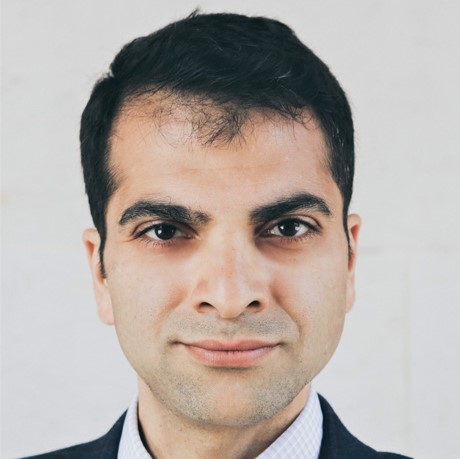Streamlining and optimizing viral vector bioprocess and analytical development
Cell & Gene Therapy Insights 2020; 6(10), 1697–1713
10.18609/cgti.2020.188
Q At the strategic level, what are the recent trends impacting or driving lentiviral vector or AAV viral vector process development respectively, for instance in terms of demand and capacity?
JT: What we are seeing right now is an explosion of demand, and what follows on from that is a lot of interest in people getting into the space and providing services.
Frankly, that frightens me a little bit, because when I look at the space I am looking for vendors, CDMOs and partners who have a track record of performance and experience. What I mean by experience is not only technical prowess, but also regulatory experience. Do they have a good track record at the agency? One wobble there, and you can be set back many, many months – or even years if it is because of a safety or comparability issue.
That is what I look for; that track record, that experience, and to form a partnership. Many vendors look more to their shareholders and their investors, and making money is a driver. But they lose sight of the fact that there are capacity limitations, and tend to oversell their capacity.
That can be problematic, particularly because of the long cycle time. For example, a timeframe of 10 to 14 months. Consider if you are 14 months out, something happens, and you have to go back and revisit something you did earlier. If the capacity is oversold, you have a problem as the innovator because you can’t go back to do another experiment, another compatibility test, another batch to prove robustness, and so on.
I would advise that in the partnership framework, do not oversell capacity, and instead try to reserve some. Unforeseen things can happen in the process development, analytical and manufacturing space, and that could really be a derailer.
Another thing I look for in this capacity model is innovation. It is easy to go in and do what everyone is doing today; the tried and true ways. I like to see the CDMO embracing innovation. To borrow an analogy from the famous hockey player Wayne Gretsky: it is not where the puck is, it is where it’s going to be.
I am looking for someone who is looking down the road and asking what things are going to look like a year from now, or 2 years from now. For example, in the lentiviral space and even the adeno-associated viral (AAV) space, the transient model is a very convenient way to get there. It can be a way to test quickly, and a way to fail quickly, but it is not going to be sustainable – especially when you scale up beyond the volumes we are talking about now, which are 48 to 50 liters. What if you had to do 5,000 liters? My own experience tells me transient is very complicated to do at that scale in suspension culture.
Therefore, I am looking for the partner who can also advance innovation and technology – maybe even getting it to a point where you can move it to looking like something that we are very familiar with, like biopharmaceutical or monoclonal antibody process unit operations. It is possible for us to move to that? We know that space very well, and we have had 35 years to develop it. Let’s not repeat the mistakes of the past and have that slow trajectory. Instead, let’s try to do a step change right away and embrace some of the new innovations coming along.
Something someone said to me many years ago fits this space right now, and it was about speed over quality. We cannot lose sight of quality in our performance. We can afford to do it twice, but we can’t afford to do it right. Instead, let’s envision how to do it right the first time, so you build it in a way which is robust, reproducible, and scalable. With this approach, you get a sustainable supply chain for the vectors we need to make in order to have this lifechanging impact on disease.
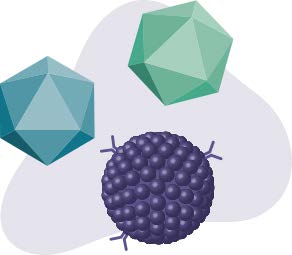 NK: I very much agree. From a process development and capacity perspective there is a lot to be done, and we must look towards the future scale, reproducibility, and process robustness. As Joe was saying, the transient model, which is a lentiviral vector production system, has issues.
NK: I very much agree. From a process development and capacity perspective there is a lot to be done, and we must look towards the future scale, reproducibility, and process robustness. As Joe was saying, the transient model, which is a lentiviral vector production system, has issues.
There are trends we can use: adherent, scaled up models that are quite exciting. Longer term, suspension cell lines are one of the potential future solutions to unlock capacity and demand. Improved, more robust downstream processing is also something the field is working on. Additionally, and especially for ex vivo gene therapies, making sure we have an automated fill system in containers that can be welded on to drug product manufacture is another incoming trend. There are a number of innovations that the field is working on to help unblock capacity, increase capacity, and make our processes more reproducible.
MW: Something which is especially important is what Joe said about how there is speed, but there are also the added time failures, mistakes, or missteps. Whether this is with manufacturing or with regulatory issues, this can add significant time to your overall drive towards commercialization. There is speed on the one hand, and then there is the question of how good that speed truly is if you have missteps or mistakes from the process development side, the manufacturing side, and regulatory side. This is an incredibly important point.
KP: At Rocket we work with both lentivirus and AAV, so I can give perspective on both. On the lentiviral front, I think the recent trends are around vector production. There are some great CDMOs like AGC, that have done a great job on process development of viral vector productions.
On the lentiviral front, it is really about cell processing. How are you able to do cell processing and have the drug product, and the analytics behind it, to help you understand the consistency of your product?
On the ex vivo lentivirus side, the differentiator is also patient material. Because of that, you really need to understand if it is the patient material causing the drug product differences, or if it is actually the cell processing, the vector, or the critical materials. At a strategic level, it is always time to play detective and investigate what is causing the consistency of the data, or lack thereof.
Another challenge with AAVs is how to scale up production in a way that gets you higher titers, so with each production you can treat more than just a few patients per batch. This is critical. Being able to do it in a way that addresses production process development activities – whether that is a lower empty to full ratio, or other components – is critical as well, because these considerations impact patient safety, and the types of reactions you may see on the side effect profile by neutralizing antibody reactions, and so on. The most important strategic considerations are scalability, and being able to manage the safety profile by producing the highest quality product.
RB: I would agree that quality of the virus is very important because, what we have seen here is, that as the industry has been developing and the capacity has been increasing either in CDMOs or organically, it is not always reflected in terms of quality.
At AGC Biologics we have made a lot of effort in terms of optimizing and building a platform to ensure transduction efficiency and having high yields.
Another obvious trend we see in the industry is that there is a shortage of supply on the viral vector side. To address this need in the market, we have been expanding our viral vector capacity in Italy. We will be continuing to monitor the market trends and expand as needed.
Q What is the right approach to optimizing your vector bioprocess as you scale up? Can the panel share any best practices?
NK: When you think about optimizing your process, it is very important to keep the long term in mind.
While you may want to do fit-for-purpose development and get a process that is suitable for the phase of development you are in, you must consider what process you want to commercialize with, what the impact of process changes are, and how well you need to characterize and test your vector along the way so that you end up with a commercializable process and product.
MW: It is important to have what we call ‘GMP-like’ process development, which we believe ultimately results in fewer missteps and in fewer delays when you get to the manufacturing side of things, and then on to commercialization.
JT: Scaling up and process development are very important. When I took on the role to lead our platform, I looked at how we were doing and decided it wasn’t sustainable, and we could we do it a different way. So we invested in process development very early, and worked on stable cell lines, suspension, and other aspects. We have written about and published on these things. It is doable, but it is not easy.
We hear about fast track designation and prime designation, and those are all great drivers to get medicines to patients. But when you really peel down the layers, they do not give you a lot of leniency on the CMC side. They still have the same expectations in the packages, but now it is in a compressed timeline. We need to be mindful of that.
One thing I want to raise to the panel, in case you were unaware, is that we participated with an advocacy agency called the Friends of Cancer Network, which deals with issues in the FDA and aims to get medicines to patients faster. They wrote a paper earlier this year about a ‘parent-child’ IND. This is where you can use a framework of a master IND, and as long as you haven’t changed anything about the process, you can move to a different indication quite rapidly.
I think we, meaning companies like the ones on this panel, need to advocate, and we need to do this for the CMC space too. That would be huge for being able to streamline and move faster. A parent–child IND framework for CMC is something we should start advocating.
KP: Collaboration is the key word. This is an area where I believe the industry as a whole needs to share best practices – what has worked, what has not worked. We should collaborate on scientific advancement, especially when it comes to AAV, and work with health authorities to get their take on the right approach to scale up.
Also, think of it like an engineer, as that is the best approach. You may do small scale and then increase the scalability, but then think about not just the ultra-rare diseases that most companies are focused on right now, but also the future of cell and gene therapy. When therapies become available for more common diseases, you will also have to think about capacities. We are going to have to figure out how to produce up to potentially 2,000 liter scale, and that is the next big wave of innovation that we need to come up with, together with our scientific experts.
Q How important is reducing the timeframes for both viral vector bioprocessing and analytics, and where do you see the chief opportunities for potential time savings?
MW: The first part of the question will always answer itself in our industry – time and speed will always matter. Avoiding delays by avoiding pitfalls, missteps, and mistakes will always matter.
What are some of the ways to gain time and to increase speed without making mistakes? One of them is to work with a CDMO partner that has a platform that is proven to save time and shave months off the overall timeframe. This can be one of the greatest time savings for partners of CDMOs.
Something else that can help to a meaningful degree, although not as much as a proven platform, is in-house testing. If CDMOs have most, or even all, of the testing in-house, that can definitely improve turnaround times and improve overall speed.
Lastly, we are at a point in the industry where there are so many more time savings and efficiencies that can be gained that we haven’t gotten to yet. They are across the entire span, in every step of the path towards commercialization, from tech transfer to process development, manufacturing, and the regulatory processes.
There is not an area of that entire continuum where we are not going to be coming up with more efficiencies. I think that the CDMOs and partners that come up with the most efficiencies, the ones that truly pay off for their customers, are going to be the partners of choice in the future.
JT: We need to distinguish between the two viral vector gene therapy processes we talk about. There is the AAV approach, which is more like an in vivo biopharmaceutical. There, the pressures are a little different – mass production, large quantities, large doses, and testing for safety. It looks very much like what we traditionally do with a biological.
In contrast, with the cell therapy and the lentiviral approaches, we look at things like what we call the vein-to-vein time; going from the patient and back to the patient. Remember, primarily we are in an autologous setting right now. Allogeneic therapies are coming, but they are not here yet.
One thing that sticks in my mind is a conversation I had with a patient at a conference about a year and a half ago. I asked them, “what can I tell my team to make your experience better? What do you need from us as drug developers?” The patient replied, “don’t make me wait. The time from when you take my cells to them coming back is too long. This is my last chance. Why does it take twelve weeks to get my product back to me?”
We do an extremely numerous number of tests in order to release things, because we don’t know what we don’t know. We are testing anything we can, and measuring it, and we don’t know what the quality attributes may be telling us.
As an industry, we need to start thinking about what we really need to know. What is really testable, and what is it telling us? Let’s not overdo it. Testing for information only can take you down a rabbit hole if you are not careful. We should try to get some of that out, and only look at what really matters in terms of efficacy and safety. That will take us a long way. Next there is automation, miniaturizing, and minimizing outsourcing of tests. Every time you outsource, it can easily add another week of time.
Maybe one day we can be right at the bedside, and everything can be done vein-to-vein on a machine, but we are still far from that. What we can do is take out all this whitespace, all of this hidden factory of work, some of which is of our own doing. Often, we just test until we find something that tells us something. That is not necessarily the best way to do it – we should do the tests that inform us.
NK: I would stress that if you want to save time, saving it on development is probably not the smartest choice, because future delays in GMP can be much lengthier.
Doing things as my co-panelists have said, such as perhaps looking at using a platform process, or at developing a fit-for-purpose and fit for the stage of development process and analytics, and then filling your gaps while you are manufacturing, is the best approach. Skimping at the beginning could cost you a lot more time and money later on.
KP: Regarding time savings, you need to make the tough decisions early on. The industry is evolving, and there is a lot more knowledge now. Have a process locked down as early as possible and think about analytics, not as an afterthought when you go to a filing, but from your Phase 1 onwards, or even at the preclinical stage.
Imagine if you had potency assays already developed before getting into an IND or CTA application – the amount of headaches it would save later on, and the time savings, would be huge. And you would have patient material to test these analytics and validate them early on.
The biggest thing we have seen in the industry recently, and especially this year, is that companies are getting either refusal to file, complete responses, or clinical holds. This is because the process changes they have made during their Phase 1 or clinical program have led to safety issues that they weren’t expecting, and they now have to figure out how to manage them. Or it has been because the analytics have been lacking, and the reference materials were not available to be able to really articulate how the comparability could be shown across the processes.
In my view, this is where you really need to focus early on. For example, at Rocket, one of our lead programs in Fanconi Anemia has been in clinical trials since before Rocket started, in academic institutions. We consider their process as process A, and it gives an amazing proof of concept for a very difficult to treat disease. Then, before we brought it into IND, we spent an extra 2 years trying to optimize the process before getting into our own program with process B.
We did a lot of research activities with our academic partners, and in-house in our laboratories, to optimize process B. This is the process we ended up taking to our Phase 1 and Phase 2 registrational studies. Although this required additional time at the beginning, this investment of having the same final product being dosed in all our Phase 2 studies across US and Europe, is going to save us so much time and energy when we do the BLA and MAA filings. Hopefully, this will help the product become commercially approved and more accessible to patients around the globe.
RB: We like to say that the race to success in cell and gene therapy is a marathon, not a sprint. I couldn’t agree more that building a robust process development early on is a crucial investment.
This means that you might spend a bit more time, but it is worth it. To avoid problems long term, it definitely makes sense to spend extra months working on the process. If you skip some steps and take some shortcuts, it could have a huge impact down the road.
As the industry matures, this point becomes quite clear to all stakeholders involved, including the investor community. When you go from one round of financing to another, how reproducible your process is becomes a critical criterion for raising more funds, and is a critical differentiator.
Q What do you see as the major considerations when assessing in-house versus outsourced bioprocessing analytics development pathways for viral vector manufacture?
NK: You have to consider what expertise and infrastructure you have in-house, versus what your potential partner has. Decide whether you want to invest early in your own facility, and how important it is to own your own process, versus shared risk and intellectual property (IP) with your partner.
Again, think long term. Where do you want to do your early stage, and where do you want to commercialize? Consider tech transfer as part of the whole process as well. Sometimes developing in-house will be faster and cheaper, but tech transfer to a partner could actually take longer than developing with them in the first place.
Consider your expertise, the partner’s expertise, and the infrastructure you and your partner have. Consider capacity, the ability to continue to deliver longer term in early phase and late phase, and commercial capabilities.
Developing cell and gene therapies is quite difficult. Considering partnership is very important, but also consider your compatibility with your partner and how you can work together for the long term. KP: For us, bringing things in-house versus keeping it outsourced comes back to a few considerations. One, where is the product in the drug development paradigm?
KP: For us, bringing things in-house versus keeping it outsourced comes back to a few considerations. One, where is the product in the drug development paradigm?
Two, what internal capacity and capabilities do you have? As we know, bringing something in-house is not just a cost activity – the FTEs and experts you need in-house are critical.
Three – and for us this is really important – how can you do the activities in-house versus outside in a seamless fashion? What would be the tech transfer investment you need to make?
It comes back to the final goal for Rocket, which is how to get the highest quality product to the patient as quickly and efficiently as possible. When we think from this perspective, we make decisions about whether we are going to do something in-house versus outside with our partners very early on – almost as early as going to a pre-IND meeting with the Health Authorities around the world.
For us, the biggest focus is to get the analytics right as early as possible. This happens to be a hot topic in the industry. We try to develop analytics in-house because of the expertise we have, and if we need to scale up between different regions, we take our internally developed analytics and processes to the vendors.
JT: It is a real dilemma, because there is this notion that we have all got this really secret stuff we do – a secret sauce that we never want to let out of our hands, and we don’t want to risk giving it to someone who might be working with others, and lose that IP. This is something we need to get over. My advice is if it is that good, go file a patent application, protect it, and make sure your CDAs are tight.
The other place we look when we consider outsourcing is of course capacity, if we don’t have it. There are a lot of medicines we are developing. Some of them are fairly simple and straightforward, and may be better put in the hands of an experienced CDMO, while we do the really difficult things internally.
We are always on this seesaw between what we keep in-house, and what we take out. There is another camp that says put the hard stuff out, and keep the easy stuff. Let the CDMO struggle with that, and let us get our milestones achieved by doing the easy stuff. That might be a sure path to failure, because CDMOs have good expertise on certain platforms they develop, but some things get into areas that aren’t developed, and that may be best left with the innovator.
Another thing we outsource is things we are not good at. For example, if we only do a given assay once in a while, we are probably not going to set up that infrastructure. Instead, we are going to go find the vendor that does it very well and give them the business. You should look at your workflows based on that as well.
MW: The part of Joe’s response I find most interesting is whether companies should outsource mostly the more standard things, or go in the other direction and outsource the more complicated, challenging things.
We, as a CDMO, aim to specialize in the more challenging projects – the things which are more challenging to get right and reliably produce. We have invested many years in trying to, not only have scientific acumen, but high acumen in taking on challenging projects. Therefore I think it probably depends on the unique experience of any given CDMO and what they are best at. Just like each of the panelists have discussed what their companies are best at, having a clear view of that, and then what makes most sense to outsource based on that, the same goes for CDMOs. Some will be better than others at the more challenging aspects, and some will be better at the more standard things – some might be a bit of a hybrid.
RB: At AGC Biologics, it is part of our strategy to look at the entire supply chain, from plasmid DNA to viral vector and cell therapy, because we realized that for many developers it is quite important to work with one partner. We give flexibility to drug developers to either have an all-in-one package, or standalone packages. We also realize this is part of the industry we are in, where some things you might want to do in-house, and some things you might want to outsource.
Q When is the right time to outsource, if such a thing exists?
KP: It depends on the company you are. Five years ago when Rocket started, we were a small company with less than 10 million dollars in our bank account, and some ideas about programs we wanted to license in. At that time, the number one thing we did was work with experts in the field to pick the right CDMOs that have the expertise we were lacking. Instead of making investments in manufacturing in-house, we went and partnered with them as our expertise was translational science, disease knowledge and drug development.
Later on we came to AAV manufacturing and process development. Scalability is a huge challenge for the industry as a whole, but we felt we have the expertise in-house, and also the financial means, given that we are a publicly traded company. So this is something we decided to bring in-house during our Phase 1 studies and have it ready for the planned Phase 2 study. It really depends on the money that you have, the resources you have, and the expertise you have.
If you are founded on a CMC technology, clearly, you are going to invest in manufacturing in-house from the beginning. But, if you are focused on a disease and on the clinical aspect of things, you may consider outsourcing manufacturing.
A lot of companies have been very successful in cell and gene therapy, and because of the successes they have had with their products. They are now at a point where they need to deliver on multiple programs. This is another great time to think about outsourcing.
If you cannot do everything you have in the pipeline in-house, and there is an amazing expert available for vector production, cell processing, or plasmid production, outsourcing might make the most sense. Then, you can really focus on the key expertise and resource you want to focus on.
Divide and conquer, so none of your programs fall behind. Because internally, when you grow from a company of a few, to a few hundred, the prioritization on where your resources are going to be placed is going to be something you discuss on an ongoing basis: what do we keep in, what do we take out? Sometimes this goes in one direction, other times it needs to go in other directions.
For leaders, it is really important to remember that there are amazing experts in this industry, great CDMOs available with deep dive expertise, and you just have to figure out what piece of the puzzle you are good at, and what you can partner with someone else to do.
RB: AGC Biologics has been in the space for over 25 years and we have learned how complex some of these processes are. It is not just about capital expenditure (CapEx), it is also about operating the facilities.
Something which makes the cell and gene therapy space unique is that the majority of the players are small and medium-sized biotechnology companies. From this point of view, many small companies go from one round of financing to another, and building a facility may not be something they want to focus on early on. And as I mentioned, it is not just about the CapEx. Even if you were to raise the funding to build a facility, operating it and building knowhow takes decades.
From this point of view, it is understandable that many drug developers decide to outsource from the very beginning, and it goes back to the paradigm shift in how clinical trials are run. If Phase 1/2 becomes pivotal, then it is even more important that you get it right from the very beginning.
NK: Of course it depends on what expertise you have and what your capacity build-out model is, but it is also very important to think about your clinical development pathway and not disrupt it. In that sense, the best place to think about outsourcing is before you start Phase 1, or before you start the pivotal trial. Otherwise, you have bigger hurdles in terms of comparability, characterization and process understanding, and a potential additional clinical cost.
JT: I think it is a balance of internal and external. Clearly, if you don’t have the capability internally you have to go with outsourcing, and there are many virtual companies out there doing that. That is part of the problem with the capacity shortfall at the moment.
For us, we have a number of programs we are moving forward, and it is a matter of prioritization and which therapeutic area needs to be first. If we have got our capacity already committed, then we have got to go to an outsourcing model to make sure we keep the priorities right on our clinical development plans.
From GSK’s point of view, we balance it based on priorities. We have also tried to go virtual early on, and it has worked for the most part, but not in all cases. Any quality problem that CDMOs or CMOs have become my problem, and it could reach all the way back to source materials that go into making plasmids, for example.
You have to keep that in mind. It might look very good that you can short circuit and move things fast by outsourcing, but you don’t know what you don’t know. Make sure you do your due diligence all the way back through that supply chain, because it could derail you if you are not careful.
Q What do you see as the role of gene therapy CDMOs in supporting the pathway to commercialization of novel advanced therapies?
MW: I see the role of CDMOs with our cell and gene therapy partners as essentially all-encompassing – from tech transfer, to planning, all the way through to regulatory approvals and helping our partners into commercialization. The right CDMO partner can be extremely valuable for their partners at every step of the way.
One piece of advice I would give potential partners is to find a CDMO that is not only really good scientifically and technically, but can also be extremely consultative to their partners along every step of their journey. That requires deep and very robust experience across the entire continuum of the journey. If a CDMO is excellent technically and scientifically, and also can be very consultative, I think that is the full package most partners will be hoping for and want to have.
Q What are the panel’s tips for troubleshooting regulatory inspections and filing requirements? Are there any specific pieces of advice you could share to ensure a good level of preparedness?
KP: For inspection readiness, from Phase 1 onwards you must think about the end product. My biggest advice is to always think about how to get a product commercialized. Be active and honest and foster a culture internally, as well as with partners and CDMOs, of open dialogue about the risks that exist.
It is always about risk assessments, and doing those assessments on an ongoing basis. This helps you understand the pitfalls you need to overcome or avoid.
Next, and this is my quality background coming into play, documentation, documentation, documentation! Every decision you make, document the rationale. The way we work, there is so much going on you are not going to remember everything, and from a health authority perspective, they need to understand the rationale. You need to understand your data, and why you made the decision you made.
What we like to do at Rocket is have external experts come in and do audits, and do reviews of our own internal capabilities, to understand the risks and the things we need to course correct even as early as Phase 1.
The last component is the world of cell and gene therapy, which is evolving quite rapidly. There are more regulations and guidances coming out, and more learnings from companies being made publicly available. As leaders in our organizations, we need to be aware of and keep a finger on the pulse of our landscape, so we can understand and consider the sticking points.
With inspections and 483s, I have an email alert set so I can review FDA issued 483s. This and development intelligence reports help me understand what things we are going to have to worry about and incorporate as things evolve. To me it is all about preparedness, willingness to learn, understanding your risk, and documenting all of those things on an ongoing basis.
NK: In terms of the inspection side, it is important to work together across different departments and teams, internal or external. You need your development, GMP manufacture, quality, and regulatory teams to work very closely together. Doing a mock inspection helps quite a bit.
On the filing side, work closely with regulators as much as possible, because things evolve and change, and they do have an appetite to help us.
JT: I would reemphasize the point about mock inspections. This is a partnership. We are not there to do mock inspections with the aim of disqualifying you. We are trying to make sure we are looking at the risk that could be there, and trying to put some corrective actions in place, so when the real inspection comes along there are no surprises.
RB: I would add that, we at AGC Biologics, have a unique experience because we started as a drug developer and then switched to a CDMO. We are probably the only CDMO that has brought its own product to the market. We have been working extensively with regulatory authorities in this regard. One of the challenges of the industry overall has been that since we are still in early stages, a gold standard doesn’t exist yet.
It is a partnership when you work with regulators, and they are not trying to trap you – you need to work together to address the issues and possible challenges together. Our background as a former drug developer has really helped us in this vein.
Q What lessons can we draw from the recent CMC-related challenges the industry has faced?
NK: One of the things that has been touched upon previously is that things move fast. Regulations move fast, and regulators are getting more stringent and more demanding. Working with the regulators is very important to get a successful trial through.
As Joe mentioned before, just because our clinical development tends to be relatively shorter, it does not mean our CMC target is expected to be shorter. You need a full dataset, you need to consider process changes, and you need to be very careful about comparability packages. Regulators are scrutinizing comparability, especially since we sometimes have to make changes relatively late in development.
We have to realize that we don’t have everything in our file, and be prepared to have a continued process verification package. Commit to understanding and collecting data when processing your product post-market as well.
JT: With COVID-19, resources are stretched. Even at the FDA’s CBER we are starting to see some glimmers of this by the refusal to files, the rejections, and being unable to schedule inspections. Do not get complacent and give the regulator an easy way to reject your file. Be complete. Do those studies that you think are important. Think of it as the end game, not the near-term.
If you leave something out it is easy for them to say you didn’t meet the checklist, and then it is coming back to you. The recent experience we read in the news is Bluebird Bio. They could be pushed back for their sickle cell treatment by a year, because of the questions they thought they had covered, but the agency had a different view. Now they have to go back all the way and try to reschedule things to happen in the plant.
KP: This is so important in cell and gene therapy, even more so than biologics. I used to tell people back in 2010, you have to think about CMC first and foremost. Think about your CMC package, and think about your analytics, because analytics really make or break it.
Think about the comparability, that is also really important. One thing we are going to have to spend a lot of time and resources focusing on is the fact that even if the clinical benefit/risk ratio is great, being able to do this consistently and reproducibly is such an important factor for getting a product approved and for getting the highest quality product to each and every patient as quickly and efficiently as possible.
Having that consistency of manufacturing is critical, and to me the lesson learned is to focus on CMC first and foremost. Be able to reproduce, and get clinical data based on the new production of the vectors for the product, in order to really be able to recommend why the benefit/risk ratio is consistent.
RB: With regards to lot-to-lot consistency, this is a challenge we see in the industry. Again, it shows just how important process development is.
When you go to the finish line, to approval, and the FDA or EMA come with questions about consistency, you realize it is not necessarily about clinical data anymore, it is not about safety and efficacy, but really about your process. This serves as a reality check to drug developers and the industry overall on how crucial this point is.
MW: We are working extremely hard within AGC Biologics on the quality side. You have to look at how good you are at regulatory inspections and preparing for and executing them. Then there is how strong your quality culture is.
This is something we are focusing on 24/7 at AGC Biologics, to ensure that we continuously strengthen our quality culture, because that will take care of most things. We are experienced in preparing for regulatory inspections and executing them. However, we don’t want that acumen to allow us to fool ourselves about our quality culture – we want to always ensure that it is extremely strong, because in the end we think this is what matters most.
Authorship & Conflict of Interest
Contributions: All named authors take responsibility for the integrity of the work as a whole, and have given their approval for this version to be published.
Acknowledgements: None.
Disclosure and potential conflicts of interest: Dr TARNOWSKI reports other from Orchard Therapeutics, other from AGC formerly known as MolMed, outside the submitted work. In addition, Dr TARNOWSKI reports GSK has a patent and patents pending for a stable cell line production technology for viral vectors for which GSK will receive royalties from licensing agreements. Ramin Baghirzade and Mark Womack are both employees of AGC Biologics. Kinnari Patel is a Rocket employee. Kinnari’s views are her own views. She has nothing else to disclose. Dr Kotsopoulou reports Orchard has a working relationship with AGC (AGC is a CMO for Orchard).
Funding declaration: The authors received no financial support for the research, authorship and/or publication of this article.
Article & copyright information
Copyright: Published by Cell and Gene Therapy Insights under Creative Commons License Deed CC BY NC ND 4.0 which allows anyone to copy, distribute, and transmit the article provided it is properly attributed in the manner specified below. No commercial use without permission.
Attribution: Copyright © 2021 AGC Biologics, Inc. Published by Cell and Gene Therapy Insights under Creative Commons License Deed CC BY NC ND 4.0.
Article source: This article is a transcript of a previously published webinar, which can be found here.
Submitted for peer review: Dec 22 2020; Publication date: Jan 19 2020.
Biographies
Joseph Tarnowski
Senior VP, Cell & Gene Therapy Platform, GlaxoSmithKline
Joseph Tarnowski, Ph.D., Senior Vice President of Cell and Gene Therapy Platforms, Medicinal Science & Technology, R&D at GSK. Experience in the research, development, registration and commercialization of products made using recombinant DNA technology. Earned a B.S. degree in Chemistry from Southeast Missouri State University, a Ph.D. degree in Biochemistry from the University of Tennessee Center for the Health Sciences and was a post-doctoral fellow at the Roche Institute of Molecular Biology. Held critical development roles for Roferon® A, Alpheron N®, Fiblast® Spray, CEPRATE® SC Stem Cell Concentration System, Natrecor®, Erbitux® Orencia®, Yervoy®, Nulojix®, Eperzan®/Tanzeum®, Nucala®, and Strimvelis™.
Nina Kotsopoulou
Vice President of Cell And Gene Therapy Technologies, Orchard Therapeutics
Nina (Ekaterini) is Vice President of Cell And Gene Therapy Technologies at Orchard Therapeutics, leading a team focused on in-house and external process and analytical development as well as outsourced manufacture. Nina has a BSc in Chemistry from the University of Athens and a DPhil in lentiviral vectors for gene therapy from Oxford University. Following her PhD, she briefly worked in her supervisors’ company, Oxford BioMedica, and went on to do two post-docs on hematopoietic stem cell biology, at Harvard Medical School and the University of Cambridge. She then joined GSK, where she initially led cell line development and associated process research for monoclonal antibodies and derivatives thereof. She then led Process Development for GSK’s Cell and Gene Therapy portfolio, including working with the inspirational team at TIGET, and completing the MAA submission for the first product, Strimvelis™, for the treatment of ADA-SCID. Following on from GSK, and prior to joining Orchard, she was Vice President of Process Development at Autolus.
Kinnari Patel
COO & Executive VP of Development, Rocket Pharmaceuticals
Kinnari Patel is Chief Operating Officer & EVP, Development for Rocket Pharma. She has 15 years of rare disease Research & Development experience including in Regulatory Science, Pharmacovigilance, Policy and Quality Compliance gained at leading pharmaceutical companies including AstraZeneca, Bristol-Myers Squibb, Novartis, Hoffmann La-Roche and Pfizer. She has led both small molecule and biologic development programs from Phase 1 through Phase 4 across multiple therapeutic areas including immuno-oncology, oncology, respiratory, virology, transplantation and metabolism. Kinnari received the dual degrees of B.S. in Biology and Doctorate of Pharmacy from the USciences in Philadelphia, PA. She also completed a 2-year Post-Doctoral Regulatory Affairs Fellowship through Rutgers University. Additionally, she received her Executive MBA from NYU Stern School of Business with specialization in Corporate Finance, Leadership and Strategy. Most recently, she graduated from the C-Suite Harvard Business School Advanced Management Program.
Ramin Baghirzade
Global BD Head for Cell & Gene Therapy at AGC Biologics
Dr Ramin Baghirzade is the Global Head of Business Development for Cell & Gene Therapy (C>) at AGC Biologics. With 15+ years of experience in life science and healthcare, Dr Baghirzade previously held roles of increasing responsibility at Roche and Lonza in global business development, strategic marketing and market intelligence functions. He holds a PhD Degree in Medical Sciences, as well as an MBA. AGC Biologics provides world-class development and manufacture of mammalian and microbial-based therapeutic proteins, plasmid DNA (pDNA), viral vectors and genetically engineered cells. AGC Biologics’ global network spans three continents, with cGMP-compliant facilities in Seattle, Washington; Boulder, Colorado; Copenhagen, Denmark; Heidelberg, Germany; Milan, Italy; and Chiba, Japan.
Mark Womack
Chief Business Officer, AGC Biologics
After a decorated career in the US Navy, Mr. Womack joined the management consulting industry, ultimately serving as the Chief Operating Officer for two global consultancies. He led both organizations to record highs in revenue and profit, while serving Fortune 200 clients across a wide range of industries. In 2018, he joined the AGC Biologics executive team and led the integration of three companies – across the US, Europe and Asia – that merged to create AGC Biologics. Following the highly successful integration, the board appointed Mr. Womack to the role of Chief Business Officer on January 1, 2019. In each of the past 2 years, he has led AGC Biologics to record highs in new business acquisition, securing contracts with many of the world’s most renowned pharma companies. Mr. Womack earned an Executive Management Certification from Harvard Business School, a Master of Science degree in Organization Development from Chapman University, and a Bachelor of Science degree in Education from Southern Illinois University.
